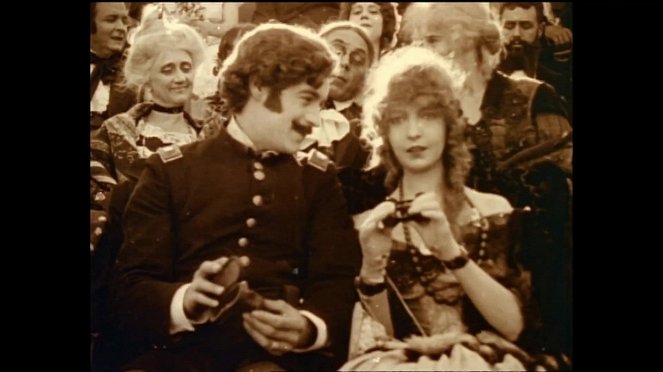Regie:
D.W. GriffithDrehbuch:
D.W. GriffithKamera:
G.W. BitzerBesetzung:
Lillian Gish, Mae Marsh, Henry B. Walthall, Miriam Cooper, Mary Alden, Ralph Lewis, George Siegmann, Walter Long, Robert Harron, Wallace Reid (mehr)Inhalte(1)
Zugleich ein rassistisches Pamphlet und der erste Film, der im Weißen Haus in Washington vorgeführt wurde. In zwei Teilen wird eine Liebesgeschichte aus der Zeit des Amerikanischen Bürgerkriegs erzählt. Uraufgeführt als “The Clansman” und nach Publikumsprotesten drei Monate später in “The Birth of a Nation” umbenannt, wird der Film für die Wiederbegründung des Ku-Klux-Klans mitverantwortlich gemacht. Alle relevanten Rollen von Schwarzen und Mulatten werden von geschminkten weißen Schauspielern dargestellt, denn eine Berührung von schwarzem Mann und weißer Frau war in jenen Jahren undenkbar. Für die damals astronomisch hohe Summe von über 100.000 Dollar in neun Wochen gedreht, führte der Film zahlreiche Novitäten der Filmtechnik und Dramaturgie ein: Parallelmontage, Verwendung von realen Landschaften als Hintergrund, Nachtaufnahmen, Einsatz von Kamerafahrten, Nahaufnahmen, dramaturgische Inszenierung von Filmhöhepunkten und erstmals Schlachtszenen mit Hunderten von Statisten. Griffith kümmerte sich weniger um die inhaltliche Ausrichtung des neuen Mediums als um seine Ausdrucksmöglichkeiten und setzte Maßstäbe für das moderne Hollywood. In Deutschland war der Film erstmals 1966 im Fernsehen zu bewundern. (Verleiher-Text)
(mehr)Kritiken (2)
The rightful king and forerunner of all narrative Hollywood tentpoles (never mind Gone with the Wind or Ben Hur), which in the span of 190 minutes both engagingly and unhesitatingly demonstrates and anticipates how classical narratives should and will guide and constantly hold the viewer's attention. In particular, the work with mise-en-scène and the cross-editing are perfect, and the final hour, when the story evenly builds up on three interconnected fronts, is a pure example of the director's ageless genius. It is undoubtedly the greatest and most inspiring work of the first twenty years of cinema, and as such it simply deserves a full rating.
()
There has been quite a lot written about how controversial this film is. Yes, it is racist. What will you do about it today? Nothing. You don't have to promote it. However, I would still like to draw attention to its cinematic qualities. The way the battles are depicted, executed, and of course, filmed is absolutely incredible. The camera is not just static here, it moves, which is quite a novelty. But that's not all. For its time, it is incredibly epic and just a few years after Méliès, we see exteriors and beautifully wide shots, as well as excellent close-up shots. Sometimes part of the camera is shaded to better focus on the scene. The shots are often edited in a way that adds to their dynamism. Clearly, it is not a montage-style editing, but it is brilliant for its time. The way the assassination of President Lincoln is captured is absolutely breathtaking, it will leave you breathless in the film's events. Griffith and his cameraman chose great camera angles that enhance the atmosphere even more. Moreover, those dynamic scenes with the camera on a carriage are truly impressive for its time. It may be racist, but it's still a cinematic gem.
()

